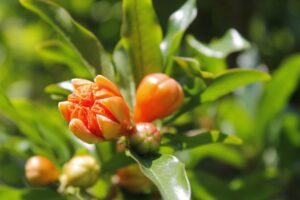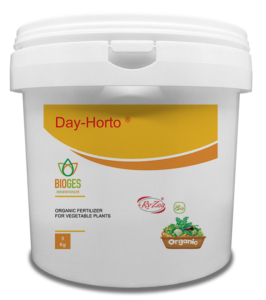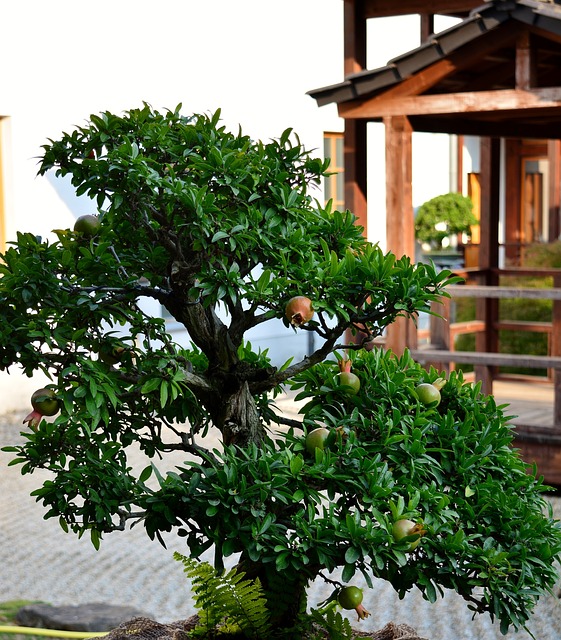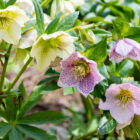
Pomegranate, not only a garden plant
Pomegranate, a plant of extraordinary beauty
 Pomegranate (Punica granatum) is a deciduous plant that adds an extraordinarily beautiful touch to the garden. Its flowering is a spectacle of nature. In particular, the pomegranate flowers are large and showy with bright red or orange petals. The lance-shaped leaves are bright green. Its fruits are not only decorative but also tasty and rich in antioxidants. Therefore, this plant is an exceptional resource for our gardens and vegetable gardens. Cultivating the pomegranate is within everyone’s reach, which is why it is among the most popular plants in garden centres. In particular, it is ideal for those who want to create a bonsai and who are beginners. In addition to its beauty, it also has a symbolic importance that varies from one culture to another.
Pomegranate (Punica granatum) is a deciduous plant that adds an extraordinarily beautiful touch to the garden. Its flowering is a spectacle of nature. In particular, the pomegranate flowers are large and showy with bright red or orange petals. The lance-shaped leaves are bright green. Its fruits are not only decorative but also tasty and rich in antioxidants. Therefore, this plant is an exceptional resource for our gardens and vegetable gardens. Cultivating the pomegranate is within everyone’s reach, which is why it is among the most popular plants in garden centres. In particular, it is ideal for those who want to create a bonsai and who are beginners. In addition to its beauty, it also has a symbolic importance that varies from one culture to another.
Pomegranate, symbol of fertility, abundance and prosperity
The pomegranate in various cultures, such as Egypt, is a symbol of fertility and prosperity. In particular, they used to bury pomegranate seeds with the pharaohs to ensure their prosperity in the afterlife. In Armenia, on the other hand, it is a very important national symbol. This fruit appears on the flag and is also a main ingredient in the local cuisine. The history of the pomegranate, therefore, is rich in cultural significance. Its spread all over the world testifies to the importance of this plant in human history.
A plant of ancient origins
The origins of the pomegranate are unclear. Supposedly, this plant originated in Iran where it grew wild. In fact, archaeologists have found remains of this fruit at sites in ancient Persia (present-day Iran). These remains date back more than 5,000 years. It later spread to the Mediterranean regions, becoming an integral part of diet and culture. This crop also began to spread to other parts of the world. In particular, in China, India, North Africa, Europe and America. Thanks to its fruit of unique taste, today, the cultivation of the pomegranate is also taking place in other parts of the world. Countries such as Iran, Turkey, Spain, the United States (especially in California and Arizona) and some areas of the Mediterranean are important pomegranate producers. Furthermore, in recent years there has been a rediscovery of the pomegranate as an ornamental plant for gardens.
What are the benefits of the pomegranate?
 Drinking pomegranate juice is very good for the health. There are many beneficial properties that this fruit brings to our organism. Thanks to the antioxidants in which they are rich, this fruit is helpful in dealing with inflammatory diseases such as arthritis. Daily consumption of pomegranate helps reduce the risk of heart diseases and improves circulation and blood pressure as well as lowering cholesterol. It is a good source of fibre and thus aids digestion and intestinal regularity. Recent studies have shown that pomegranate may help inhibit the growth of cancer cells. Finally, pomegranate is also present in many cosmetics. In fact, it counteracts skin ageing, moisturises it and improves its appearance.
Drinking pomegranate juice is very good for the health. There are many beneficial properties that this fruit brings to our organism. Thanks to the antioxidants in which they are rich, this fruit is helpful in dealing with inflammatory diseases such as arthritis. Daily consumption of pomegranate helps reduce the risk of heart diseases and improves circulation and blood pressure as well as lowering cholesterol. It is a good source of fibre and thus aids digestion and intestinal regularity. Recent studies have shown that pomegranate may help inhibit the growth of cancer cells. Finally, pomegranate is also present in many cosmetics. In fact, it counteracts skin ageing, moisturises it and improves its appearance.
Pomegranate tree, a plant not only for your garden
The pomegranate tree is popular not only for its ornamental beauty but also for its versatility. In fact, its cultivation can occur not only in vegetable gardens and orchards, but it also lends itself to the creation of a bonsai tree. To create a pomegranate bonsai you need to arm yourself with patience and a lot of dedication. Read more in the cultivation sheet produced by Doctor Bioges.
⇉pomegranate bonsai tree⇇
Choose the ideal pomegranate variety for your garden or pot
There are many varieties of this plant growing all over the world. Among the most popular ones is the Wonderful variety, with its sweet and slightly sour flavour. It is often used to make pomegranate juice. Then there is the Eversweet variety which is known for its resistance to various diseases. Salavatski is a variety known for its resistance to cold. The fruits have a thin skin and are sweet and juicy. Very popular is Punica granatum var. nana (Dwarf Pomegranate), with its small fruits and a dark red skin, it is ideal for small gardens or for growing in pots. When choosing a pomegranate variety, you should consider several factors, including the local climate, flavour preferences, the purpose for which the fruit will be used and the size of your growing space.
How do you grow a pomegranate plant?
Sustainable pomegranate cultivation is possible by following these guidelines:
– Choose pomegranate varieties that are suitable for the climate and conditions in your garden. This will reduce the need for watering and constant maintenance of the plant.
– Place the pomegranate plant in a sunny, well-drained area to promote healthy growth and reduce the risk of fungal diseases.
– Avoid over-watering. Therefore, opt for drip irrigation, providing water to the plants without wastage.
– Reduce the use of chemical fertilisers and pesticides and opt for environmentally friendly green solutions such as resistance inducers and organic fertilisers.
– Prune the pomegranate regularly to not only maintain the target shape, but also to remove dry and sick branches.
– Support local wildlife by preserving native vegetation.
– The soil must be deep and well-drained with a pH of between 6.0 and 6.5.
Planting flowers that attract helpful insects
This is an excellent way to promote your garden’s ecosystem and improve biodiversity. Indeed, they play an essential role in pollinating plants and controlling weeds and pests. In your garden you may opt for planting flowers such as lavender, sage, borage, rosemary, verbena and marigold. It is preferable, therefore, to plan the choice of flowers so that there are always flowering plants in the garden during the different seasons. These will provide food and habitat for beneficial insects at all times. The diversity of these plants will not only attract a wide variety of useful insects, but also contribute to a well balanced ecosystem in the garden. Adopting these good practices will promote biodiversity, which is essential for the health of the planet.
Pomegranate fertilisation
 It is important to grow pomegranates in an ecologically sustainable way. The use of pesticides and chemicals damages biodiversity. It is therefore necessary to adopt environmentally friendly farming practices that promote efficiency and conservation of natural resources, as well as the health of the ecosystem. Fertilising pomegranate organically helps to keep the soil healthy in the long term and promotes biodiversity. It also helps to preserve the environment and produce healthier fruit. The use of organic fertilisers such as Day-Horto, which contains the essential macro nutrients for plant development, and algal extracts in the form of RyZea for fruit development, should therefore be preferred. The use of beneficial microorganisms such as mycorrhizae or soil bacteria is also essential. They contribute to the decomposition of organic matter and the availability of nutrients.
It is important to grow pomegranates in an ecologically sustainable way. The use of pesticides and chemicals damages biodiversity. It is therefore necessary to adopt environmentally friendly farming practices that promote efficiency and conservation of natural resources, as well as the health of the ecosystem. Fertilising pomegranate organically helps to keep the soil healthy in the long term and promotes biodiversity. It also helps to preserve the environment and produce healthier fruit. The use of organic fertilisers such as Day-Horto, which contains the essential macro nutrients for plant development, and algal extracts in the form of RyZea for fruit development, should therefore be preferred. The use of beneficial microorganisms such as mycorrhizae or soil bacteria is also essential. They contribute to the decomposition of organic matter and the availability of nutrients.
Join us also on our social networks: instagram.com/bioges.it || facebook.com/biogesit 🇮🇹 || facebook.com/biogesandco 🇬🇧
and subscribe to our WhatsApp Channel so you won’t miss any new trends and products about garden and vegetable care products!




